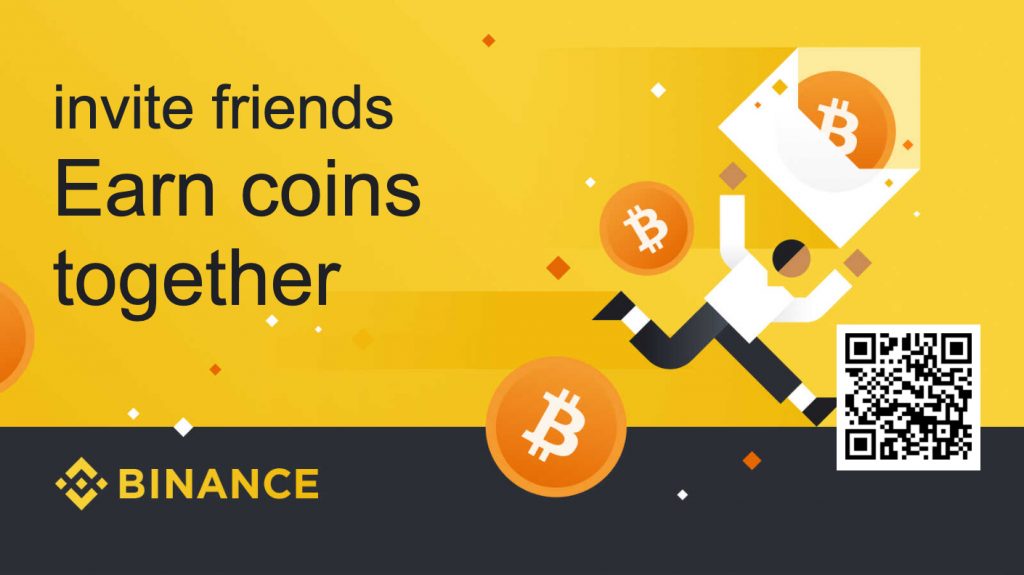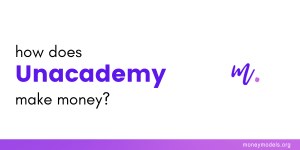What is the business model of Binance? Binance is one of the most popular cryptocurrency exchanges in the world. It lets you trade cryptocurrencies, invest in pool funds, and stake coins to generate returns. But how did it become this large cryptocurrency exchange that it is today? And how does Binance make money?
How does Binance make money?
Binance makes money in two major ways: (1) Binance charges brokerage fees in Binance coins (BNB) for every transaction that takes place on the exchange. (2) It makes capital gains on the coin investments and BNB coin price rises. Binance also earns from stock token spreads, order flow revenues, interest on crypto loans, and mining fees.
Let’s take a deeper look into how Binance works and its business model.
Also read: How does eTrade make money?
What is Binance?
Binance is a cryptocurrency exchange that makes it easy for crypto-enthusiasts and new entrants in the market to buy and sell coins/tokens.

It offers one of the widest range of options to widen your investment portfolio and diversify based on the risk appetite.
In September 2019, Binance began offering:
- Perpetual futures contracts
- Leverage trading as high as 125 times the value of the contracts
- P2P trading
- Launchpads for new coins so investors can pool existing coins for a 15-90 day period and get free coijns from the ICO
- Coin staking to generate more of the same coins (works like fixed deposits)
- and much more
This gave rise to the cryptocurrency trading culture which did not exist before. It is safe to say that while Binance wasn’t the first exchange, it sure has become the major choice for intraday or high-frequency traders.
Recommended read: How Does Zelle Make Money? [Business Model]
How does Binance work?
Binance works like a brokerage company for the end-user. Think of Zerodha, eTrade, Robinhood, and others. But there’s a lot more to it.
Let’s put that into context by looking at the stock markets that we’ve known for centuries.
With a traditional stock exchange, you have multiple parties involved:
- The buyer
- Brokerage firm used by the buyer (Robinhood, TD Ameritrade, Zerodha, eTrade)
- Stock exchange (NASDAQ, NYSE, NSE, BSE, SGX, etc.)
- Brokerage firm used by seller
- Seller
The brokerage firms could be the same. But the stock exchange still has to be present for the transaction to occur.
With Binance, the exchange and the brokerage firm are the same. So a buyer and seller are directly buying on the Binance exchange while getting charged a brokerage fee.
Binance works in a seamless manner allowing buyers and sellers to transact on the exchange while being the brokerage firm that facilitates the transaction.
Also read: How does BharatPe make money?
A Brief History of Binance
A long time before cryptocurrencies were popular, buying a coin was an absolute mess.
You had to set up a software wallet, mine, or purchase the coins from a stranger on the internet, and pray that you get the coins and not get scammed.
It was a small community though, and people made trust-based purchases.
But as the popularity grew, it became important to make sure that the fiat currency ➔ cryptocurrency exchange happened in a safe and secure manner.
That’s where companies like Binance, Coinbase, Kraken, and many others came into the picture.
Binance was founded in 2017 by Changpeng Zhao.
Before Binance, Changpeng worked in a stockbroking firm where he developed a high-frequency trading system company called Fusion Systems. He used the experience and learnings from this company and applied it to build Binance into a powerful crypto exchange.
Soon as Binance was launched, Changpeng started aggressively listing all high-value coin offerings. He received his first big investment of $15 million from Daniel Oon in July 2017.
Changpeng continued to raise funds from ICOs and Venture Capital until Binance became a profitable company in 2018.
Let’s now look at the business model of Binance and understand what made it rise to the top of the list of exchanges in the world.
Also read: How Does Affirm Make Money?
The Binance Business Model
Binance earns profit from trading and broker program fees, loans, trading spreads, mining services, interchange fees, cloud services, and other investments.
Binance had an early entrant benefit in the crypto exchange market. Changpeng’s knack for trading also gave him an upper hand with the understanding of traders’ needs.
He envisioned Binance as the infrastructure services provider for the blockchain ecosystem.
The Binance business model is structured as follows:
- Userbase
- Strong cloud infrastructure
- Quick listing of ICOs
- Leveraged trading
- Crypto investment choices
- Binance Smartchain
1. Userbase – foundation of the Binance business model
Binance is ranked as a crypto exchange leader on Statista‘s daily exchange ranking list. We can conclude that Binance also happens to have the highest active user base of all the exchanges in the world.
This brings in a network effect for Binance since an exchange requires more users to make transactions. If one user is buying on Binance, they’d want someone else to sell. And the more buyers and sellers on the platform, the higher the transactions, the more users who get attracted to the platform.
2. Strong cloud infrastructure
Building a platform that facilitates billions of dollars in transactions daily requires powerful cloud infrastructure. Turns out, Binance became so good at it that they now have their own cloud services company.
3. Quick ICO listing
One of the major advantages of Binance was how quickly it listed new cryptocurrencies. Along with that, Binance’s launchpad feature allowed coins to not only get listed but also gain the much-needed initial traction by offering free coins for staking existing tokens.
You will observe this commonly for Binance smartchain based coins like BNB, BUSD, CAKE, 1INCH, etc.
This wasn’t always the case though and Binance has had rumors of accepting upto 400BTC in bribes to list tokens earlier. Now the fee structure has become way more transparent and the entire process of listing a coin is really straightforward too.
That is not to say it’s easy to get any coin listed. It only means that it’s easier for people to apply for a listing.
4. Leverage Trading
Day traders love leverage. You can have $100 in your account but trade for $12,500 as the highest leverage offered by Binance is 125x your margin.
While this differs based on your trading data, you get an idea of how this could help good traders. This power of leverage trading wasn’t seen before on any popular exchanges and has hence become the reason why intraday traders prefer Binance
5. Crypto Investment Choices
Binance allows you to choose from multiple different coins. But along with that, you can also invest in different crypto investment vehicles that use your existing coins and maximize the returns.
You can stake your coins to earn interest as you do with bank FDs (see how banks make money), mine on the cloud to earn more coins, add liquidity to the pools with liquidity swap, and many more interesting new concepts.
6. Binance Smartchain
The Binance smartchain is not only a way to get more founders to launch currencies, it also allows Binance to increase the prices of its own coin BNB. The increase in the utility of the Binance smartchain in turn impacts BNB prices positively making Binance a lot of capital gains in the process.
How does Binance make money? Revenue Sources
Binance makes money from trading fees, loan interest, fees on API usage, stock token spreads, cloud services, debit-card transaction fees, mining, and profits from crypto investments.
Let’s take a deep dive into each of these revenue sources of Binance.
1. Brokerage or Trading Fees
Binance is a cryptocurrency exchange and trading platform first. Everything else is an addition to the platform.
For every transaction that you make on Binance, you can choose to pay trading fees in BNB or an alternate coin that you prefer.
The incentive to use BNB is a discounted trading/brokerage fee. Each account has a different trading fee depending on the amount of bitcoin value their account holds.
But this incentive makes more users switch to Binance which (1) increases the number of BNB that Binance holds and (2) raises the price of BNB making it into a profit machine for Binance.
For other coins apart from BNB, Binance makes a fixed 0.1% trading fee for every transaction.
2. Investment profits
Binance started making a lot of new cryptocurrency investments over the last few years. It is not public knowledge about what investments Binance makes, but the process is fairly simple.
Similar to how you make a profit on selling investments, Binance makes a profit after selling the coins they hold.
Additionally, they continue to earn BNB coins as mentioned in the previous point which increases their pool indefinitely as long as users trade using Binance.
3. Interest on Crypto Loans
One of the interesting additions that Binance has made is crypto loans. These are internationally available loans.
Since tracking crypto is almost impossible, Binance allows collateral-based borrowing. You have to lock in 40-70% more amount of BNB/USDT than the amount you need to borrow.
Users who need short-term capital do not have to resort to selling off their coins and can rely upon getting the loan instead.
Binance charges interest on the loan and the proceeds will be accounted as the revenues for the company.
4. Binance Broker Program API
Binance opened up a Broker program and allowed new and upcoming brokers to integrate with the Binance infrastructure using their APIs.
The brokers who partner with Binance receive a 30%-50% commission on the brokerage that their clients generate. And Binance pays out a tiered bonus based on the amount of monthly brokerage generated.
This is a win-win situation for both parties involved.
Since there are no fees for integrating with Binance, more brokers integrate with their infrastructure using the Binance API.
Along with that, Binance gets a broader reach and more active users generating more brokerage for Binance.
The partner broker wins as well with the additional commissions on the brokerage apart from any fees they may collect from the client to provide investment/trading services.
5. Binance Card Transaction fees
The Binance debit card lets you spend your crypto like a regular bank account. Every time you use your debit card, the cryptocurrency in your wallet needs to be converted to fiat for the transaction to occur.
Binance charges upto 0.9% fee per transaction or ATM withdrawal with the Binance card.
| Item | Fee |
|---|---|
| Transaction fees (Payment and ATM withdrawals)* | up to 0.9% |
| The first issuance of the virtual or physical card | 0 |
| Reissuance of the virtual card | 0 |
| Reissuance of the physical card | EUR 25 |
| Inactivity (12 months) | 0 |
| Account closure | 0 |
6. Binance Cloud for Hosting a Crypto Exchange
If you’re looking to run your own cryptocurrency exchange and want the infrastructure to support the operations, the Binance cloud services solve your problem.
The benefit of signing up with Binance cloud is not only limited to the infrastructure. But by integrating with Binance, you merge your exchange in the same liquidity pool as Binance giving your exchange the initial traction that you require.
7. Stock Tokens and Spreads [Discontinued on Binance]
Binance created stock tokens and pegged the prices of these tokens with the actual share prices.
Consider this similar to BUSD or USDT which is tethered to the price of actual USD exchange rates.
With stock tokens, Binance did not allow you to purchase the stock but instead let you trade on the stocks internationally. Whenever an investor made a loss, Binance earned the difference.
However, Binance has discontinued stock tokens and from October 2021, these tokens will no longer be available on the platform.
2020 Milestone Achievements for Binance
1. Binance Exchange
- $15 billion in 24-hour all-time-high spot trading (up by 5 billion compared to 2019)
- $3.88 billion average daily trading volume (up by 36%)
- 184 tokens listed on Binance (up from 151)
- 591 trading pairs on Binance (up from 396)
- 7,000,000 USDT in recovered funds by Binance Customer Service for 3,109 users this year. (Total funds recovered since 2017 is 15,000,000 USDT)
- 26 languages featured on the Binance website (up from 16)
- 11 languages supported by Binance Customer Service
2. Binance Futures, Options, and Margin
- 37 billion USDT in 24-hour all-time-high futures trading (up by 34 billion compared to 2019)
- 2.6 billion USDT in all-time-high open interest (up by 18-fold since the start of the year)
- 1.7 trillion USDT in total trading volume year-to-date (up by 28-fold compared to 2019)
- 400+ trading pairs available for Margin Trading (up from 56)
- 149 derivative contracts listed on Binance Futures (including 78 USDT-margined contracts, 33 Coin-margined contracts, 32 leveraged tokens and 6 options contracts)
3. Binance Fiat (local currencies)
- $31.9+ billion in total order volumes this year
- $100,000,000+ all-time-high daily trading volume
- 7,970,000+ orders processed this year
- 700% increase in active users from 2019
4. Binance P2P
- $6 billion in total order volumes this year
- $54 million all-time-high daily trading volume
- 3,000,000 orders processed this year
- 1,454 P2P merchants worldwide
- 760% increase in active users from 2019
- 150 payment options accepted worldwide
- 51 fiat currencies supported
5. Crypto-Financial Services
- $2,900,000,000 worth of crypto assets currently on Binance Earn
- $70,850,000 worth of total rewards distributed on Binance Earn
- 210,000+ daily active users of Binance Earn
- 3rd: current ranking of Binance Pool in global mining, just nine months after launch.
- 2.5% and 0.5% mining fees for BTC and ETH respectively on Binance Pool, the lowest in the crypto mining industry.
- $700,000,000 in volume generated via the Binance OTC Portal
- 46% growth in institutional client base this year
6. Binance Smart Chain
- 60 projects using Binance Smart Chain
- 600,000 unique Binance Smart Chain addresses
- 3,000,000 BNB staked by Binance Smart Chain validators
- 40 wallets offered on Binance Chain & Binance Smart Chain (up from 30)
- 810,000 Binance Chain addresses (up from 332,444 in 2019)
- 154 tokens listed on Binance DEX (up from 111)
- $344,000 in recovered funds for Binance Smart Chain users following the WineSwap exit scam
Check the full list of milestones on the Binance blog.
Final words
Binance business model is really interesting. Their growth and marketing strategies have left behind many exchanges that came up years before Binance did.
If you want to explore more business models like this one, visit here.


![Read more about the article How Does Houzz Make Money? [Business Model]](https://moneymodels.org/wp-content/uploads/2022/01/How-does-houzz-make-money-business-model-300x150.png)

![Read more about the article How does Craigslist make money? [Business Model]](https://moneymodels.org/wp-content/uploads/2021/04/How-does-Craigslist-make-money-300x150.jpg)